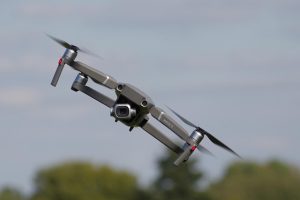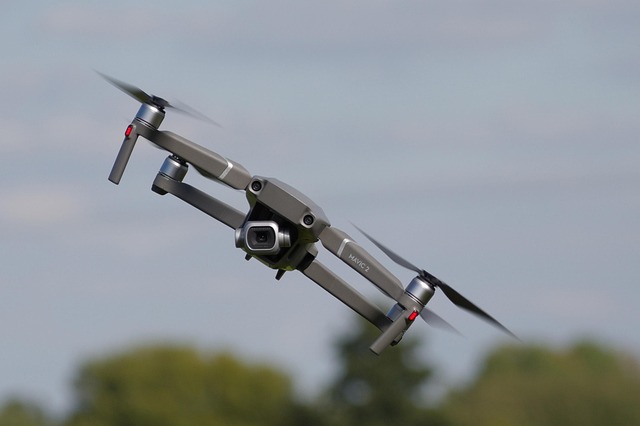The world of photography has been transformed by drone technology or surveillance, opening up breathtaking aerial perspectives that were once impossible without expensive helicopter rentals.
Summary: If you need a quick answer, I recommend either DJI Phantom 4 PRO or DJI Inspire 2 as your best drones for still photography.
Reviews: Top 5 Best Drones for Still Photography
1. DJI Phantom 4 PRO Professional Drone, Hobby RC Quadcopter
Next up is the DJI Phantom 4 Pro (with a hull shape), which has interestingly included the omnidirectional (5-direction) obstacle avoidance for all objects, including buildings or trees that are on its way while shooting your photographs.
- Camera: 20MP (1-inch CMOS sensor, mechanical shutter)
- Flight Time: 30 mins
- Range: 7 km
- Key Features: Omnidirectional obstacle avoidance, 4K/60fps, burst mode.

With its mechanical shutter and ability for burst mode shooting (at 60FPS), its camera is highly rated and will give you top quality images (that have the 4k resolution too). It can achieve about a 72 kph speed.
It has exciting photographing modes – Tripod Mode (max 4mph speed), Atti Mode, and Position Mode (enables obstacle detection & tracking) that will make your shooting fun and simple. I love the return to home function since you can make the drone to retrace its path to its initial position – and thus possibly avoiding obstacles.
2. DJI Inspire 2 Quadcopter Premium Combo
It comes with the dual battery system, which gives the drone loner flight time, will power systems like the processors, stabilizers, & camera, safeguards against failure in case of a battery malfunction.
- Camera: Zenmuse X4S (20MP) or X5S (supports RAW)
- Flight Time: 27 mins
- Range: 7 km
- Key Features: Dual battery system, obstacle avoidance, 6K RAW video, customizable controls.
I love its versatility – it has mountable gimbals that provide room for mounting an extra camera in the future. For a quick spin (manual), the drone has C1 & C2 buttons that you can customize to 14 available options – features that, among others, ensure that the flight is safe and stable.
It has a Zenmuse X5S camera with a fantastic FPV camera (which is forward-facing) that allows one to view around the drone and hence enhance seamless controlling. Additional features include that you can also alter the maximum speed when the drone is descending (from 8.9 mph to about 20.1 mph).
Its processor (the CineCore 2.1) allows burst mode camera shooting. It has a lightweight build, with reliable motors and allows excellent control and propulsion. From a distance of 30 meters, the drone can detect various objects that you need to photograph.
The two models will allow you to unleash your photography creativity, capture those excellent aerial shots, capture still images from different angles, just like you require music videos.
3. Yuneec Typhoon H Pro – Ultra HD 4K
This Typhoon H is the old viable option to the DJI Inspire 2 and Phantom 4. Unique characteristics include the 360-degree gimbal (for panoramic images), obstacle avoidance (through Realsense), and has a landing gear (6-rotor) that is retractable in addition to having folding arms!
- Camera: CGO3+ (12MP, 4K)
- Flight Time: 25 mins
- Range: 1.6 km
- Key Features: 6-rotor stability, retractable landing gear, RealSense obstacle avoidance.
Its camera will capture in 4k resolution (shooting as 25 frames/ second) and comes with the f/2,8 (14 mm) lens. Further, you can use the 120 fps slow-motion feature.
For your still photography work, the six rotors will render the drone and the camera to be very quiet/ smooth while shooting images or filming videos.
Even with no smartphone, you can use the android controller to undertake all the camera and drone operations. It is a hexacopter drone, which means that it has six blades to give you more power and control.
4. DJI Mavic Pro Collapsible Quadcopter Starters
DJI Mavic Pro is a highly portable, lightweight, and small-sized drone that is great for gigs and traveling still photography – mainly due to having folding props and arms.
- Camera: 12MP (4K)
- Flight Time: 27 mins
- Range: 7 km
- Key Features: Foldable design, 3-axis gimbal, ActiveTrack for subject tracking.
Luckily, it also has a very compact 3-axis gimbal, 4K camera, and can shoot stable videos even with no image stabilization. It can sense and track objects using the Optical Flow & ActiveTrack software, respectively.
Finally, with the DJI wireless goggles, it’s possible to achieve the 1st -person perspective – which is great for still photography. Read Also: DJ Headphones.
DJI’s newest mid-range offering packs impressive capabilities into a compact form factor. The dual-camera system provides excellent flexibility, while the larger sensors compared to previous Air models deliver noticeably better image quality.
The extended battery life is among the best in its class, and the robust obstacle avoidance system makes it one of the safest drones for beginners to learn on. The Air 3 strikes an ideal balance between performance, portability, and price.
Perfect For: Enthusiasts upgrading from entry-level drones and professionals needing a reliable backup.
5. Skydio 2+ – Best for Autonomous Shooting
While the Skydio 2+ doesn’t have the largest sensor on this list, its AI-powered autonomous flight capabilities are unmatched. The drone can track subjects with incredible precision while automatically avoiding obstacles, making it perfect for action and sports photography.
- Camera: 1/2.3″ 12MP sensor
- Video: 4K/60fps recording
- Flight Time: 27 minutes (per battery)
- Obstacle Avoidance: Revolutionary 360° AI-powered system
- Tracking: Advanced hands-free subject tracking modes
The system is particularly valuable for solo photographers who need to capture themselves in challenging environments, as the drone can intelligently navigate complex spaces without constant pilot input.
Best For: Action sports, adventure photography, and situations where autonomous tracking is valuable.
Considerations when choosing Drones for Still Photography
1. Camera Resolution
The camera is the most critical factor for still photography. Look for drones with large sensors (1-inch or bigger) as they capture more light and detail. Higher megapixels (12MP+) ensure sharp, high-resolution images.
Opt for drones that support RAW or DNG formats. These files retain more data, giving you greater flexibility in post-processing. A mechanical shutter (like on the Phantom 4 Pro) helps avoid rolling shutter distortion in fast-moving scenes. Read Also: Headphones for Guitar Amps.
2. Flight Control Range
Longer flight times mean more opportunities to capture the perfect shot. Most high-end drones offer 25-30 minutes per battery, while budget models may only provide 15-20 minutes. But, Bluetooth, radio waves, and Wi-Fi connections have a limited range, and this will weaken as it moves to a further distance.
Always factor in extra batteries for extended shoots. Some professional drones, like the Autel Evo II Pro, push flight times to 40 minutes, which is ideal for commercial work.
3. Balance Portability and Performance
If you travel frequently, a compact, foldable drone (like the Mavic 2 Pro) is a smart choice. These models fit in backpacks but still deliver pro-level image quality.
Larger drones (e.g., Inspire 2) offer better stability and payload capacity for interchangeable cameras. However, they’re bulkier and require more storage space.
4. Obstacle Avoidance is Essential
For beginners, obstacle sensors prevent crashes while learning to fly. Advanced systems (like DJI’s omnidirectional sensing) are crucial for urban environments with trees, buildings, or power lines.
Some drones, like the Yuneec Typhoon H Pro, use Intel RealSense for smarter object detection. If you’re shooting in open areas, basic sensors may suffice.
Conclusion
Choosing the perfect drone for still photography depends on your specific needs, budget, and skill level. The market offers exceptional options at every price point, from the compact DJI Mini 4 Pro to the professional-grade DJI Inspire 3.
For most serious photographers, the DJI Mavic 3 Pro represents the best balance of image quality, flight performance, and portability. Those needing the absolute best image quality should consider the Inspire 3, while travelers and hobbyists will appreciate the Mini 4 Pro’s combination of capability and compact size.
